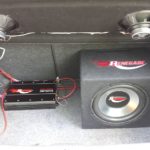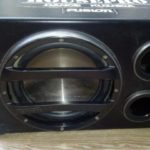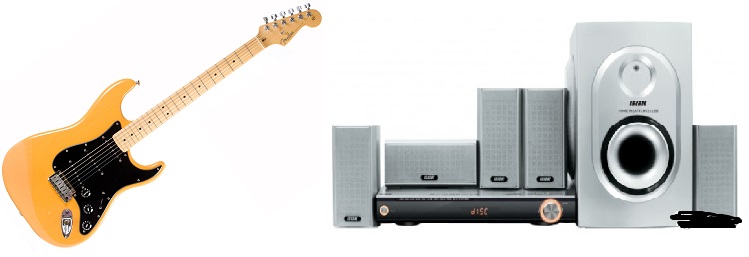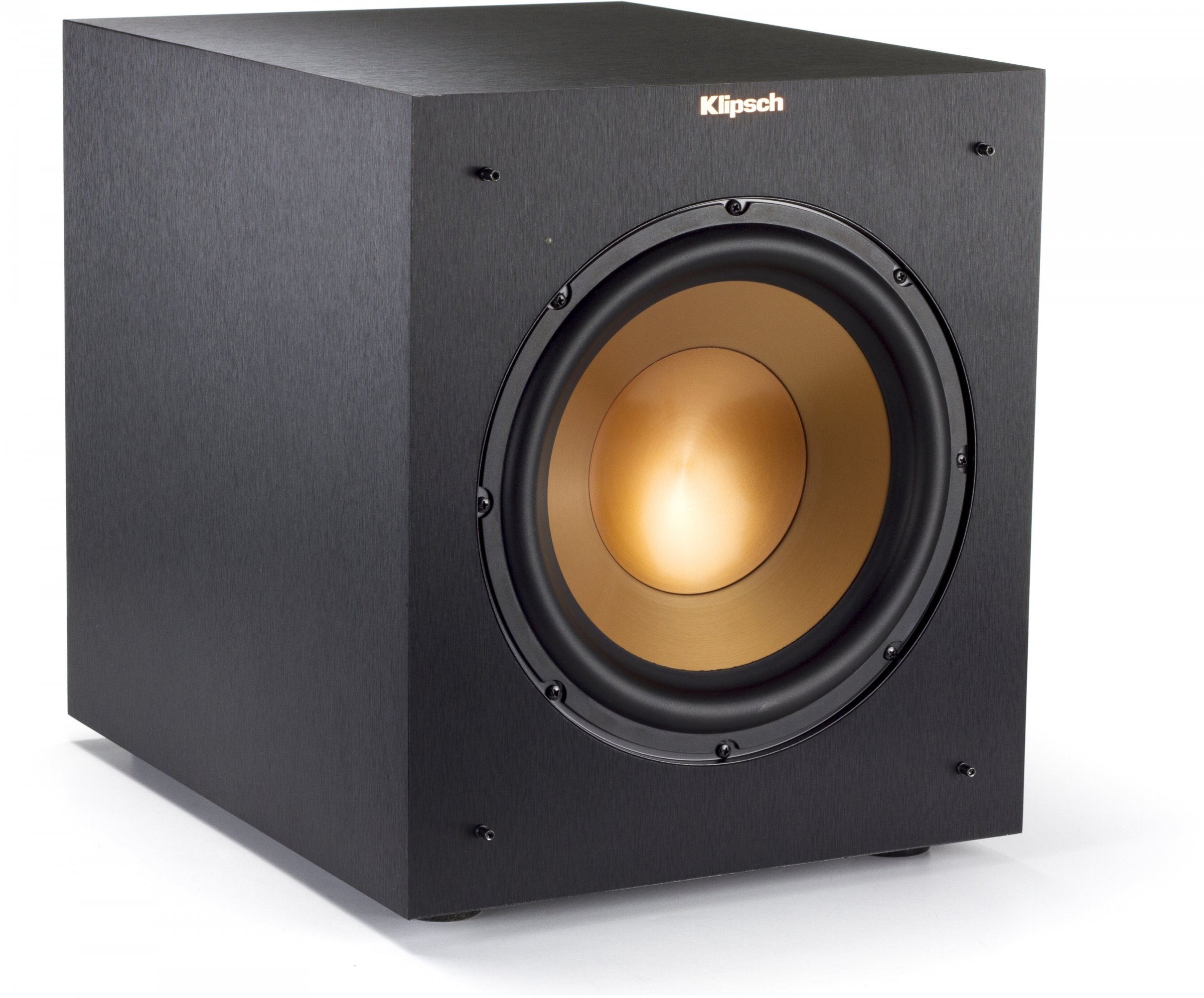How to connect speakers to an amplifier in a car
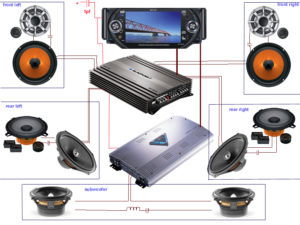 The presence of a sound system is an integral part of any car. However, many car enthusiasts are not satisfied with the standard installation and they change the equipment according to their preferences. To ensure high-quality sound, properly selected equipment is not enough. It is required to carry out competent installation and configuration of the entire system.
The presence of a sound system is an integral part of any car. However, many car enthusiasts are not satisfied with the standard installation and they change the equipment according to their preferences. To ensure high-quality sound, properly selected equipment is not enough. It is required to carry out competent installation and configuration of the entire system.
The content of the article
Methods for connecting speakers through an amplifier in a car
There are several options for installing audio equipment. The choice of one or the other depends on how many output channels are available on the receiver, the location and number of speakers, and whether or not a subwoofer will be used. There are three methods in total:
- Consistent. Used when installing speakers of the same type. Broadband acoustics with low frequencies are most often used. This option allows you to create a four-channel system, while effectively distributing the power of the speakers.
- Parallel. Used when connecting high impedance speakers to a receiver whose impedance is designed for lower power.
- Series-parallel. This option is applicable when it is not possible to achieve the desired sound using the first two methods.
How to connect speakers to an amplifier in a car
The simplest way is to connect two speakers to a two-channel receiver, four to a four-channel receiver, and so on. But often it is not possible to install another device, and the number of speakers needs to be increased. In such cases, one of the above methods is used.
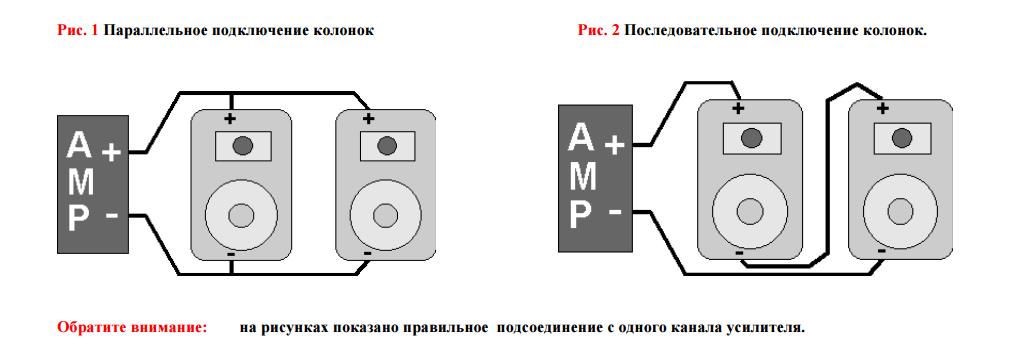
ATTENTION! The choice of method for connecting acoustics to an amplifier depends on the minimum resistance value of the amplifier.
Serial connection
With this option, the columns are connected one after another. It is very important to follow the rule here - the connection is made by connecting the positive terminal of one speaker to the negative terminal of the other. When all the elements are connected in one chain, the total impedance increases, while the output power begins to fall.
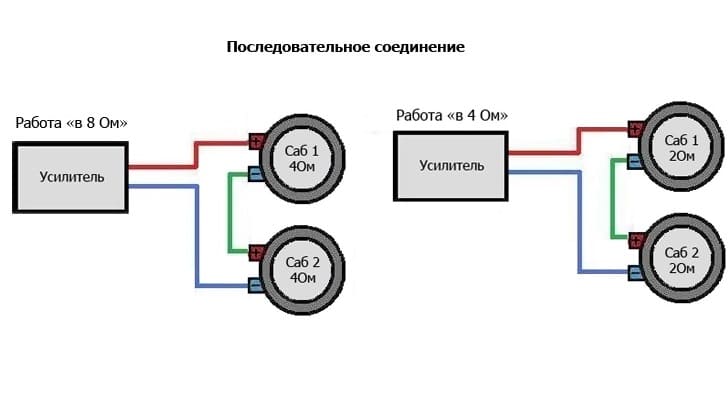
This method is most often used when it is necessary to reduce the output parameters of elements, for example, to reduce the power of the supporting central or rear channel. The sequential method allows you to assemble a chain of any number of loudspeakers. In this case, their total resistance should not exceed 16 Ohms. This is explained by the fact that there are very few amplifiers with high impedance.
IMPORTANT! In the series version, it is forbidden to connect speakers with different impedances, otherwise each of them will sound at a different volume!
To assemble the chain correctly, you need to use a simple formula:
A = A1+A2
where A1 and A2 are the impedance values of the speakers, and A is the impedance value that will be obtained when assembling the chain.
ATTENTION! This formula is used for all three speaker connection options.
The connection itself is carried out as follows:
- the first column is connected with a minus to the positive channel of the second channel;
- The positive terminal connects the first speaker to the negative terminal of the device;
- the second speaker is connected with a positive voltage terminal.
If a chain of several columns is connected, the installation will be carried out according to a similar scheme.
Parallel connection
This option is exactly the opposite of the sequential one. With the parallel method, the impedance will drop and the output power will increase. The number of speakers used will depend on the receiver's ability to handle low loads, as well as the power level of the speakers used. The most common receiver models can operate at an impedance of 1–2 ohms. It is very difficult to find a device capable of operating at a resistance of 0.5 ohms.
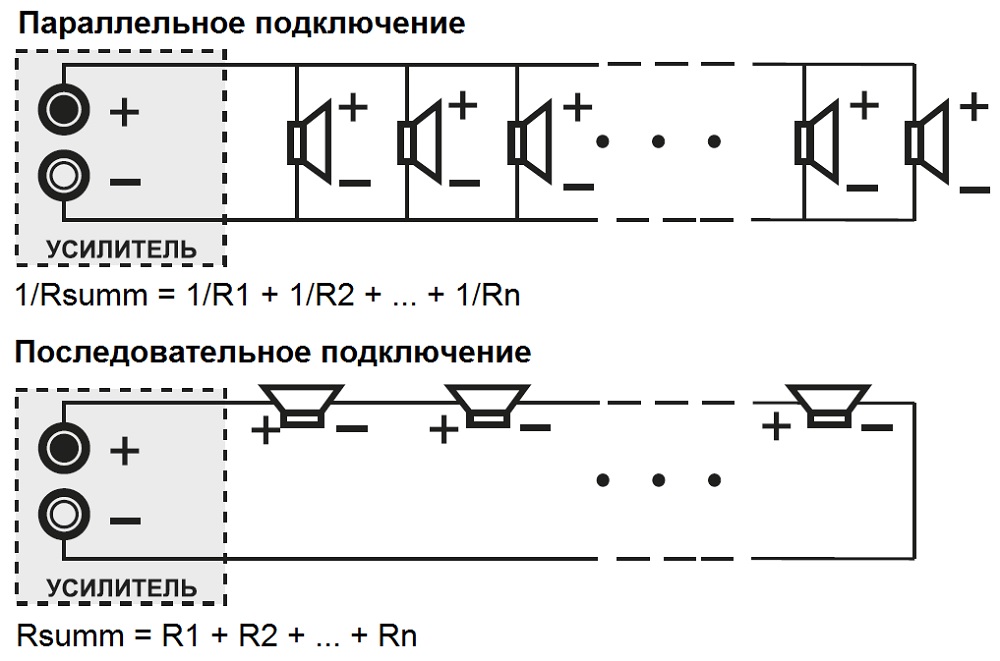
ATTENTION! If you connect a resistance to the amplifier that is lower than its rated values, the device may be damaged!
The final impedance value is calculated using the following formula:
A = (A1xA2) / (A1 + A2)
where A is the final resistance value that will be obtained after collecting the entire chain of elements, A1 and A2 are the impedance value of the connected columns.
When assembling the chain, the connection is made in accordance with the phase - the negative terminal of one column is connected to the positive terminal of the second device.
Parallel-serial connection
This option allows you to achieve the desired sound quality. This is accomplished by combining acoustics and matching them with the receiver in terms of impedance.
Also, parallel-serial connection is the most common method.This is because it allows you to fully regulate the amount of power supplied to the device and at the same time avoid excessive load on the amplifier.
The method is combined, that is, the connection diagram is a parallel and serial connection of speakers.
It is performed as follows:
- the negative terminal A1 is connected to the positive terminal A2;
- negative contact A3 is connected to positive;
- positive terminals A1 and A3 must be connected to one channel;
- negative contacts A2 and A4 - into one negative channel;
- the resulting contacts are connected to the receiver, and the correct polarity must be observed.
When using two-channel equipment, the subwoofer will be connected in the same way. If the amplifier is four-channel, then the sub must be connected using a separate bridge.
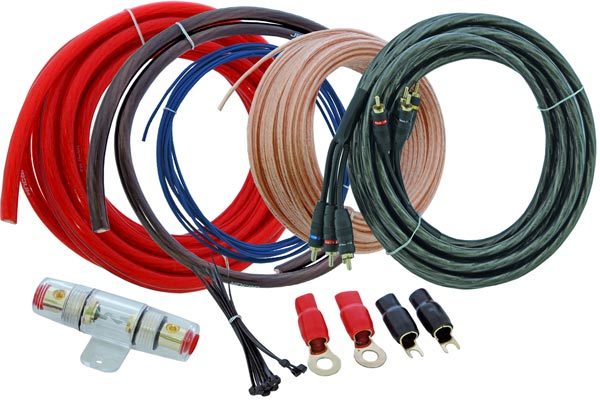
When installing acoustics, do not forget that all terminals and wires used must be of high quality. Polarity must also be strictly observed.
If you strictly follow all the connection diagrams, you can easily achieve high-quality sound from the radio in your car.

